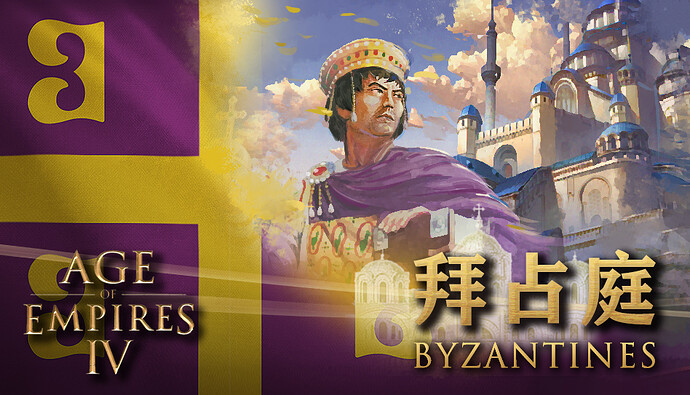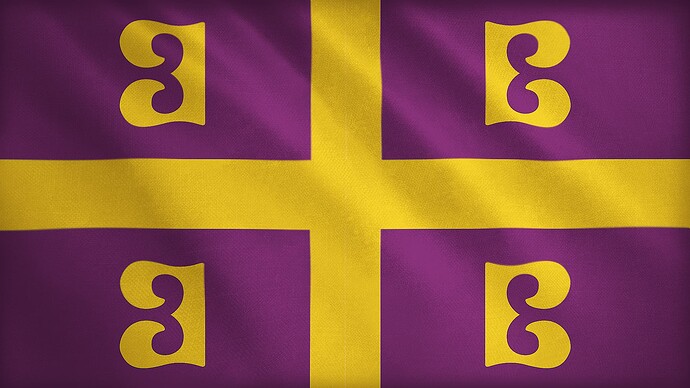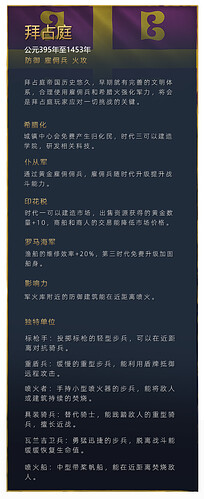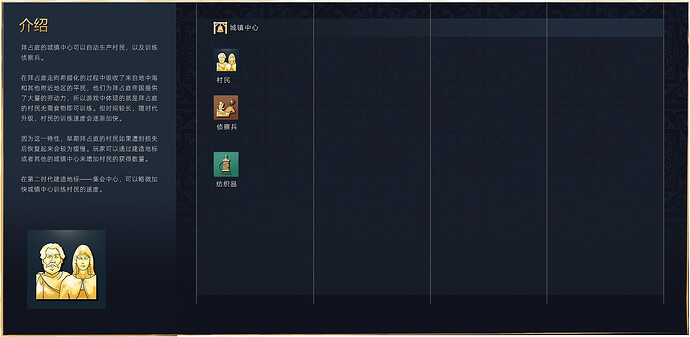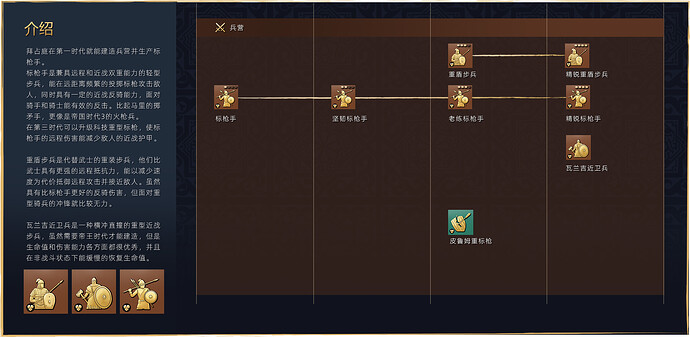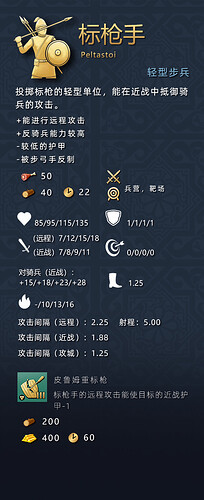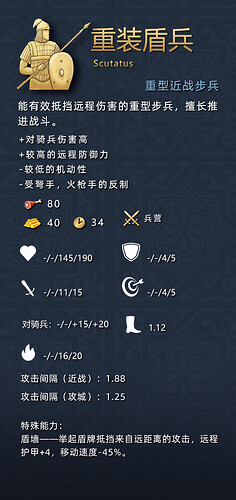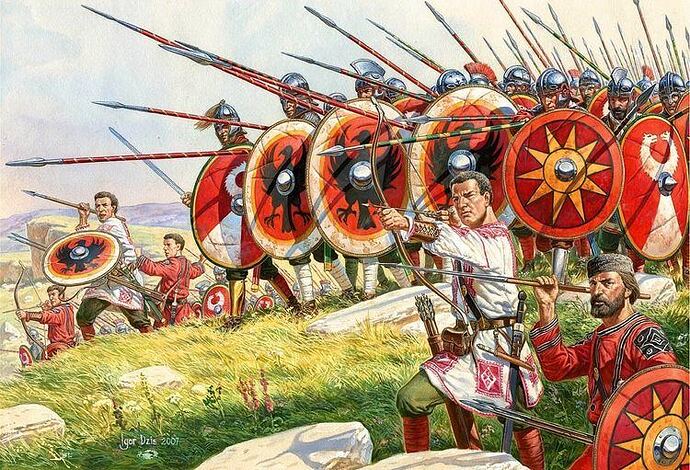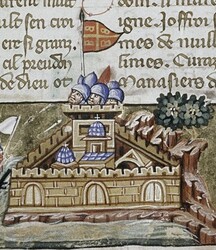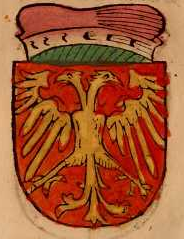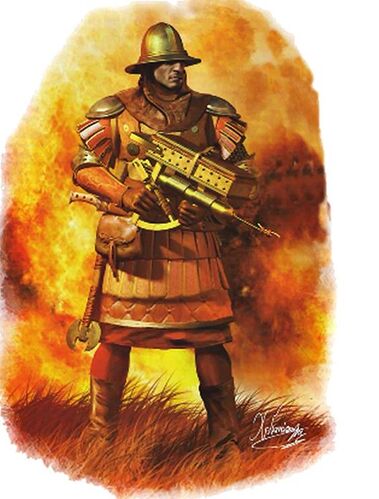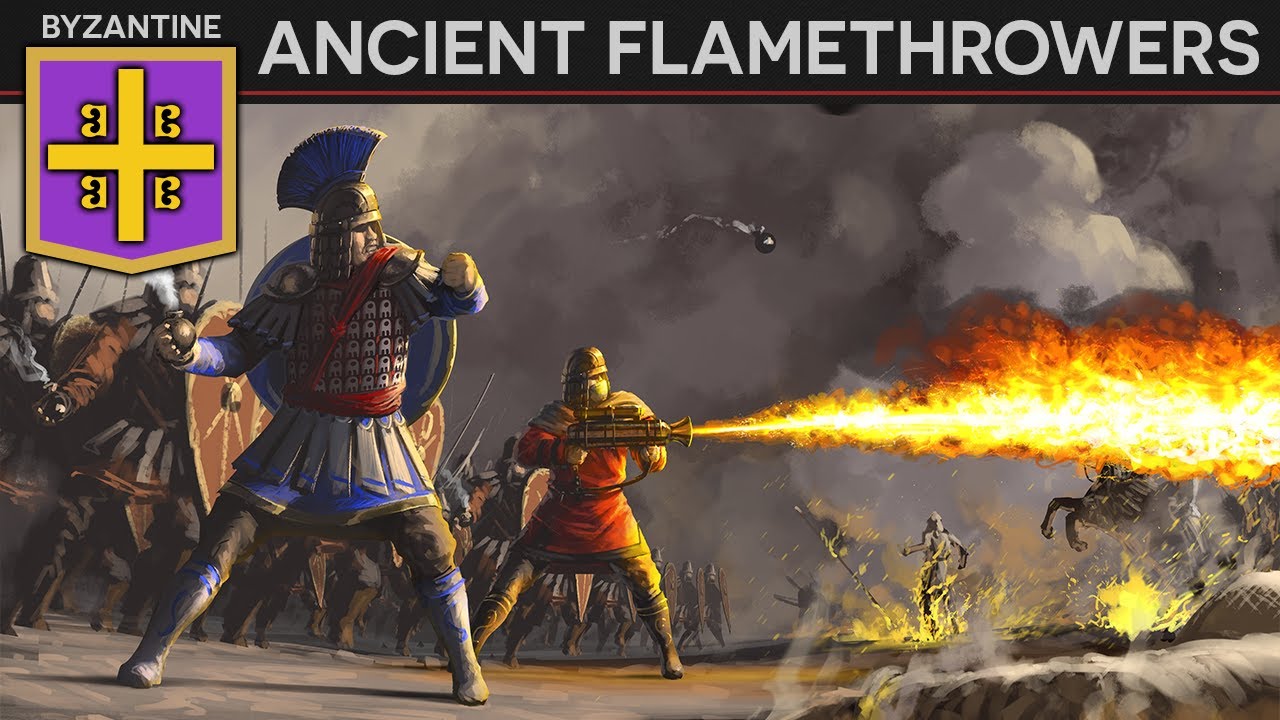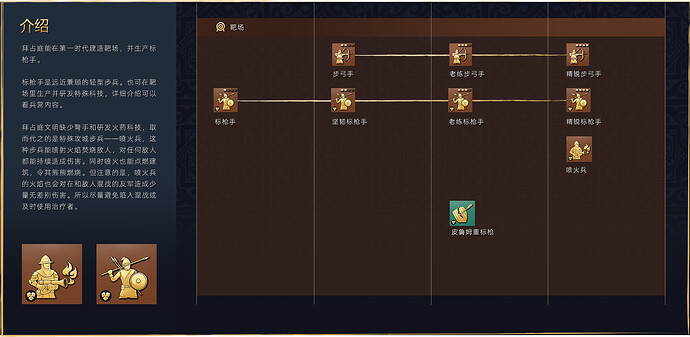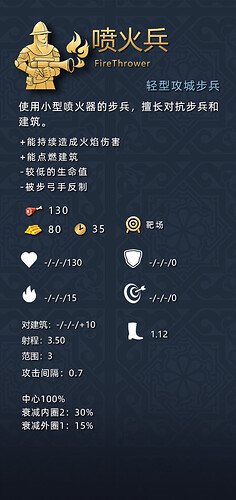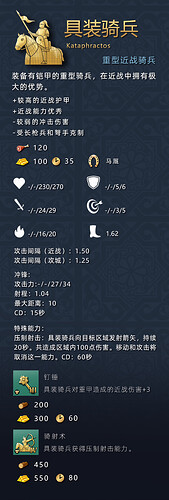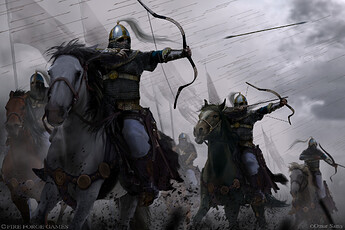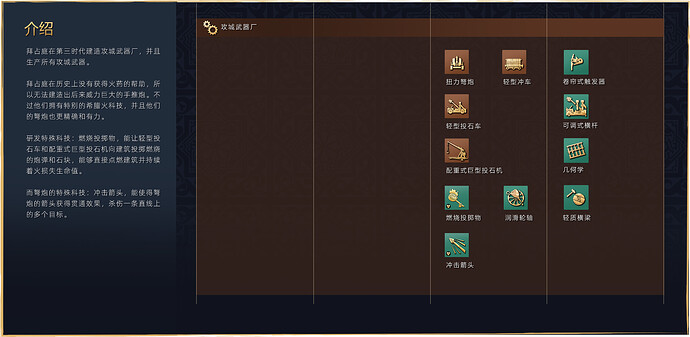这是我继日本幕府DIY之后的第二个游戏阵营设计。大部分历史内容和素材都取自谷歌。
欢迎大家讨论和提议。
This is my second game camp design after Shogunate DIY. Much of the historical content and material comes from Google.
Discussion and suggestions are welcome.
旗帜的设计,是基于拜占庭Palaiologos Dynasty时期的图样,结合拜占庭特色的紫色要素。
The design of the flag is based on the design of the Byzantine Palaiologos Dynasty, combined with the characteristic elements of Byzantine purple.
大部分创意框架其实也是在一年前就想好了
后来对内容做了一些删减。
拜占庭的风格就是,缓慢,稳健,取舍。通过经济上的长处进行发育,积累资源优势然后转化为军力推平对面。但兵种上缺少针对性的常规单位,在遇到一些特别战术的时候就需要用佣兵来补齐。
Most of the creative framework was actually planned a year ago
Some cuts were made later.
The Byzantine style is slow, steady, give and take. It thrives on its economic strengths, accumulating resource advantages and then turning them into military forces. But the lack of targeted conventional units, in the encounter of some special tactics need to use mercenary to complete.
拜占庭人的文明起始时间我暂定在395年,这个时间点相比其他中世纪国家来说要早多200年左右。
查士丁尼死后国库空虚,但继承了罗马的军事,商业,文化遗产。所以表现在经济上的劣势就是起始的资源较低,但在早期的各方面体系更完善。
My tentative date for the beginning of Byzantine civilization is 395, which is about 200 years earlier than other medieval countries.
When Justinian died, the Treasury was empty, but he inherited Rome’s military, commercial, and cultural heritage. So the economic disadvantage is that the initial resources are lower, but the system is better in all aspects in the early stage.
拜占庭的起始资源为:80食物,150木材,100黄金
The Byzantines start the game with 80 food, 150 wood, and 100 gold.
拜占庭人虽然在游戏开局的时候比较不利,但他们也有优势。
The Byzantines had a disadvantage at the beginning of the game, but they had an advantage.
拜占庭人的城镇中心会自动免费的训练村民,虽然较缓慢。
Byzantine town centers automatically train villagers for free, albeit slowly.
但随着玩家在游戏内的升级,训练的速度会变快。
But as the player progresses through the game, the training speeds up.
I 黑暗时代25 S;II 封建时代23S;III 城堡时代20S;IV 帝王时代18S
参考依据
Historical reference basis
在拜占庭时代,希拉克略王朝末期,从叙利亚、埃及、迦太基出逃了几十万天主教难民,他们聚集在了希腊,君士坦丁堡等帝国内部疆域,提供了大量的劳动力。
In the Byzantine era, at the end of the Heraclius dynasty, hundreds of thousands of Catholic refugees from Syria, Egypt, Carthage, they gathered in Greece, Constantinople and other parts of the Empire, providing a large number of labor.
杂项 miscellaneous
拜占庭村民的头像我在旧的欧洲村民的基础上做了一些细节的改变。
Byzantine villager avatar I changed some details based on the European villager.
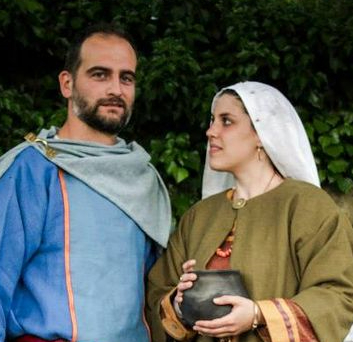
The costume of Lombardy people on the Italian Peninsula in the 6th century.
另外一个优势是拜占庭在黑暗时代可以建造早期市场,发达的航路和商业让拜占庭一度成为欧洲地中海的经济文化中心。同时市场在交易的同时可以征收印花税。每一次出售资源或者购买资源,都会马上返还10的黄金。
Another advantage was that Byzantium was able to build early markets in the dark Ages, and developed shipping routes and commerce made Byzantium the economic and cultural center of the European Mediterranean for a time. At the same time, the market can collect stamp duty at the same time. Every time you sell a resource or buy a resource, you get 10 percent of your gold back immediately.
Military
拜占庭的军事力量构成,陆军分为轻步兵,重步兵,重骑兵。
Byzantine military structure, the army is divided into light infantry, heavy infantry, heavy cavalry.
轻步兵具有较大的机动性,所披戴的盔甲也比较少。他们通常穿戴皮制戎装。携带弓、箭袋和长枪。
Light infantry have greater mobility and wear less armor. They usually wear leather military clothes. Carries a bow, quiver, and spear.
重步兵往往依靠军团和方阵的力量进行缓慢而坚决的冲击, 因此他们头戴圆锥形头盔,身披从颈项一直覆盖到大腿的锁子甲,并有 保护手和腕部的铁手套,保护小腿的胫甲,手持圆,投枪和剑。
Heavy infantry often rely on the strength of legions and phalanxes to carry out slow and determined attacks, so they wear conical helmets, chain mail that covers the neck to the thigh, iron gloves to protect the hands and wrists, shin armor to protect the calves, and carry balls, lances, and swords.
拜占庭军队中最基本的力量是纪律严明的重骑兵。他们装备的盔甲和兵器与重步兵大体相同,只是增加了弓箭和铁履,而且战马的头、颈、胸等部位也都披挂盔甲。
The most basic element of the Byzantine army was the disciplined heavy cavalry. Their armor and weapons were almost the same as those of heavy infantry, but with bows and arrows and iron shoes, and their horses wore armor on their heads, necks, and chests.
因此,我将拜占庭的军队定义为重型部队为主,轻型步兵作为掩护输出的方向。散兵相比传统的长矛手更加多样化,但生命值也更低。
Therefore, I defined the Byzantine army as mainly heavy troops with light infantry as cover output direction. Skirmishers are more diverse than traditional spearmen, but they also have lower health.
重型步兵和重型骑兵有比其他国家的骑士与武士,具有更好的防御力。但在进攻方面需要轻步兵的辅助。
同时拜占庭是一个弓箭为主要战斗兵器的民族,所以他们缺少弩手,也没有火药单位,包括火枪手,手推炮等。这些空缺位置会用其他的相关科技升级选项和雇佣兵取代。
Heavy infantry and heavy cavalry have better defenses than knights and warriors of other nations. But light infantry is needed on the offensive.
At the same time, the Byzantines were a people with bows and arrows as their main weapons of war, so they lacked crossbowmen and gunpowder units, including musketeers and thrusters. These vacant positions will be replaced with other relevant tech upgrade options and mercenaries.

Barracks
拜占庭的兵营汇聚了几种独特的兵种:标枪手从黑暗时代就能训练,是一种轻型护甲的进攻多面手。重盾兵和瓦兰吉近卫兵虽然都是重型步兵,但一个倾向于缓慢推进,一个则更像中国的皇宫卫兵一样,担任突击手。
Byzantine barracks are home to several unique classes: Peltastoi, trained since the Dark Ages, is a light-armored offensive versatile. While both Scutatus and Varangians were heavy infantry, one tended to advance slowly and the other, more like the Chinese Palace Guards, served as a rapid assault.
标枪手更接近于帝国时代3里的火枪手,有平庸的远程攻击和少量的反骑兵伤害,只不过在帝国时代4,他们依旧是轻装步兵。在前期面对少量的骑手或者骑士的时候也能组成有效的反制。
Peltastoi is closer to the Musketeers of Age of Empires 3, with mediocre ranged attacks and little anti-cavalry damage, but in Age of Empires 4, they are still light infantry. It can also be an effective counter to a small number of Horseman or Lancer in the early stages.
因为拜占庭没有常规的反装甲兵,所以我给予了标枪手一个特殊科技———皮鲁姆标枪,能让标枪手在射击带有护甲的敌人时削弱他们的护甲数值。
Since Byzantium didn’t have a regular anti-armored force, I gave Peltastoi a special technology,——Pilum, which allows Peltastoi to shoot at armored enemies and weaken their armor.
注:攻击并不会让为0护甲的单位变成负数。
PS: When the target’s armor value is 0, it does not become negative.
参考历史
历史上罗马军团在应对蛮族入侵的时候发明了一种特质标枪,能轻易的钉入木质的盾牌从而令盾牌变的累赘无法使用。逼迫对手舍弃护盾进行近战或者放弃冲锋。如果刺入链甲,则可以重伤甚至杀死敌人。
Reference history
Historically, Roman legions responding to barbarian invasions developed a trait called the javelin, which could be easily hammered into wooden shields and rendered useless. Force your opponent to abandon their shields for melee or to abandon their charge. If pierced, it can seriously injure or even kill the enemy.
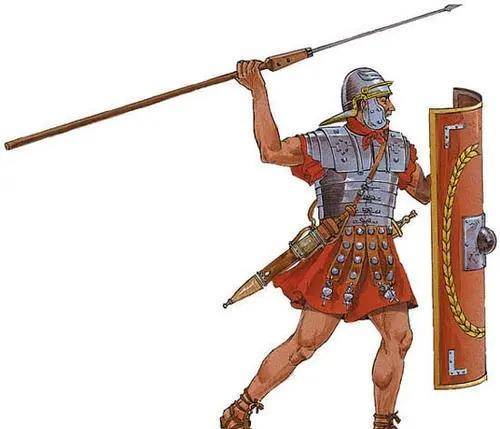
Pilum
A spear used against cavalry.
非常“罗马”的单位
Very “Roman” infantry.
像是帝国时代1的百夫长,近战防御力较高,但容易被远程火力压制。
Like the Centurion of Age of Empires 1, it has a good melee defense, but is easily overwhelmed by long-range fire.
我在设计的时候参考罗马军团的方阵推进战术,以及魔兽争霸3里人类步兵的能力,给重盾兵增加了特殊技能:盾墙,牺牲了机动性换取远程防御能力,在掩护自己同时慢慢逼近对方,这个模式下步兵的远程护甲可以达到8点,甚至于弩手的射击伤害会有所打折。
My design was based on the Roman Legion’s phalanx push tactics and the ability of the human infantry in Warcraft 3 to add a special ability to the heavy shield: shield wall, sacrificing mobility for ranged defense, and slowly closing in on the enemy while covering themselves. In this mode, the infantry’s ranged armor is up to 8 points, and even the crossbowman’s shot damage is discounted.
The infantry corps of the Byzantine army.
瓦兰吉近卫兵
Varangians
拜占庭帝国的明星单位,最受人议论的蛮族军队之一。
最早我想将他设计成雇佣兵,但很多人提出这些人是王室近卫,所以。。。
The star unit of the Byzantine Empire, one of the most talked about barbarian armies.
I originally thought of him as a mercenary, but a lot of people suggested that these guys were royal guards, so…
或许他和英格兰的温嘉德步兵很相似,但是并不,我觉的瓦兰吉近卫兵应该是移动速度更快的突击型战士。
Maybe he’s similar to England’s Wynguard Footmen, but that’s no, I think Varangians are much faster assault fighters.
结合了他们对于王室忠诚的历史特色,我将他们设计成了免疫一切招降能力。
Combined with their historical loyalty to the Crown, I designed them to be immune to all kinds of recruitment.
同时他们还能在脱离战斗的时候治愈自己。
They can also heal themselves when they are out of combat.
Early Varangian Guard. Illustration by Christos Giannopoulos.
Wow so much work, so cool! This is amazing.
Devs should take notes, beautiful icons as well.
我喜欢你的文明理念,开发人员需要做笔记,干得好。
Big Like just for your effort
If they get added, I hope it’s under the name Eastern Roman Empire and not Byzantine
What a great concept you brought us here! However I do miss the navy part (understandable, many dosn’t want to cover this part).
But there is another unit that would be really REALLY cool to add.
Bynzatine Flamethrower troops for imperial age.
Yes they had a very “primitive” flamethrower, that was highly effective, a pocket version of the one they had on ships with shorter range.

I imagine these boys being effective Siege-infantry unit, similar to chinese Grenadier, but more specialised against Light Infantry, Siege and Buildings.
Yes, I did design this.
I know, but the game’s requirements for “camp flags” are not so strict, such as the Malian Empire flag.
Thank you for reminding me.
Range & Stables
靶场&马厩
这两个建筑放在一起的原因之一主要是拜占庭的靶场和马厩内容并不像其他国家一样丰富,反而比较单调。
One of the reasons why these two buildings are put together is that the content of shooting ranges and stables in Byzantium is not as rich as in other countries, but rather monotonous.
Peltastoi can be produced in Byzantine firing ranges and barracks.
The stable could only produce two types of cavalry, Kataphractos and scouts.
历史上,拜占庭的骑兵部队延续了罗马的重骑兵为主,拜占庭军队实力的核心一直是其包括具装骑兵在内的重骑兵,他们由晚期帝国的锅盔骑兵(Clibanarii)进化而来。步兵仍出现在战场上,但主要负责辅助骑兵,成为骑兵机动的战场支撑。帝国大多数步兵是名为Skutatoi和后来的Kontarioi (Kontarios的复数形式)的重步兵,剩下的是轻步兵和名为Psiloi的弓兵。
Historically, Byzantine cavalry units continued the Roman heavy cavalry dominant, and the core of Byzantine military strength has been its heavy cavalry, including mounted cavalry, which evolved from the Clibanarii of the late Empire. Infantry was still present on the battlefield, but it was mainly responsible for supporting cavalry, which became the battlefield support for cavalry maneuvers. Most of the imperial infantry were heavy infantry called Skutatoi and later Kontarioi (plural of Kontarios), with the rest being light infantry and bow soldiers called Psiloi.
他们对于轻骑兵或者说骑手则倾向于直接招募和雇佣萨尔玛提亚人,库曼人等草原民族的战士。鉴于这一特色,我把骑手划分到了雇佣兵范畴。同理,拜占庭人对于弩的理解也非常的匮乏,军队中极少出现弩或者说完全没有,弩手以雇佣意大利半岛上的热那亚人弩手为主。所以骑手和弩手这两个其他国家都很常见的针对性单位都划到了雇佣兵中。
For light cavalry, or horsemen, they tended to recruit and employ the warriors of the steppe peoples, such as the Sarmatians and the Cumans. Given this distinction, I classify Horseman as a mercenary. Likewise, the Byzantines had a very poor understanding of crossbows, and there were few or no crossbows in the army. Crossbows were mainly employed by Genoese crossbowmen from the Italian Peninsula. So the horseman and the crossbowman, two units that are common in other countries, are drawn into the mercenaries.
拜占庭在升级到帝王时代后,没有研发化学的科技,也就没有火枪手,和手推炮,取而代之的是以瓦兰吉近卫兵这一突击战士和另外一种特殊的攻城士兵——喷火者代替。
When Byzantium was upgraded to the imperial age, there was no chemical technology, no musketeers, no cannons, but instead the Warangi Guardsmen and a special kind of siege soldier—— Fire thrower.
希腊火,这种和后来的火药相比更像是可挥发性燃油的物质通过管道和点火装置,能化成火舌,对面前的人造成杀伤。
Greek fire, more of a volatile fuel than later gunpowder, could burn through pipes and ignitions, killing people in front of them.
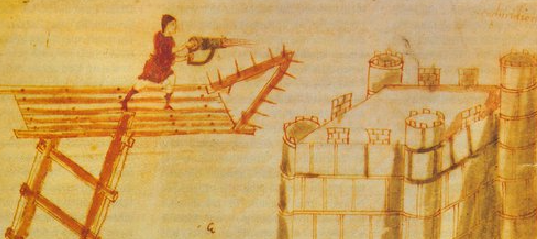
《拜占庭英雄》这一书中有这样一副画面,攻城塔上士兵手持一个小型类似水枪的武器对城池进行喷射。虽然是否有实物尚且未知,但作为单兵攻城武器这无疑是一种超越时代的军事创意。
以此为契机,我设计了喷火者。
In the book 《Heroes of Byzantium》, there is an image of soldiers from siege towers spraying the city with a small weapon resembling a water pistol. It is not known whether there is any actual weapon, but it is a military idea that is ahead of its time.
As a result, I designed the Fire thrower.
这种像英雄连中的工兵一样的单位能在近距离向对面喷火。造成小范围内的AOE伤害。不过相比掷弹兵这样的伤害,喷火兵的范围伤害衰减要来的更厉害一点。所以喷火兵更倾向于对一个单位进行持续输出。
These soldiers, like combat engineers in the game Company of Heroes, can breathe fire at enemies at close range. Deal a small amount of fire damage. However, compared to the Chinese Grenadier, the range damage attenuation of the Fire Spitfire is a bit more severe. Therefore, the Fire thrower is more likely to do sustained damage to a unit.
另外一个特色就是喷火兵对建筑的攻击能马上让建筑进入点燃状态,而不是像其他攻击一样烧到残血了才会点燃。
拜希腊火所赐,拜占庭的不少攻城单位都有这样的特色。
喷火兵的0护甲和射程注定了会被步弓手集火,所以单独出很容易被克制。
Another feature is that Fire Spitters can fire buildings immediately, rather than having to reduce their health to a certain point like other infantry.
Thanks to Greek fire, many Byzantine siege units have this feature.
With zero armor and a short range, Fire Spitters are doomed to be overwhelmed by long-range infantry, making solo action extremely dangerous.
Kataphractos,拜占庭军队中常见的重骑兵,相比2代的Cataphract(甲胄骑兵),我更愿意叫他具装骑兵。
不过相对于2里的范围攻击特色,我倾向于让具装骑兵同时拥有近战和远程双重能力。
同时,具装骑兵对于步兵的压制力也很强,但相比欧洲的骑士,这方面的特色我以更高的近战护甲来完成。
Kataphractos, heavy cavalry common in Byzantine armies, corresponding to 2 generations of Cataphracts.
However, I prefer the Kataphractos to have both melee and ranged capabilities as opposed to the trampling damage in Age of Empires 2.
Kataphractos also has a strong holding power against infantry, a feature I replaced with higher melee armor compared to European knights.(like Boyar)
回到拜占庭的一个关键点——反装甲上,我对拜占庭的理解是:他们缺少常规反重甲,所以就以重甲来对抗重甲,同时辅以少量的针对性单位取胜。
所以我给具装骑兵堡垒时代增加了钉锤科技,和神罗的大锤异曲同工。
Let’s get back to the Byzantine topic of anti-armor. My understanding of Byzantium is that they lacked regular anti-armor, so they fought heavy armor against heavy armor, and won with a small number of anti-armor.
So I added hammer tech to the Age of armored cavalry forts, allowing them to inflict extra damage on armored units, just like the hammer tech of the Holy Roman Empire.
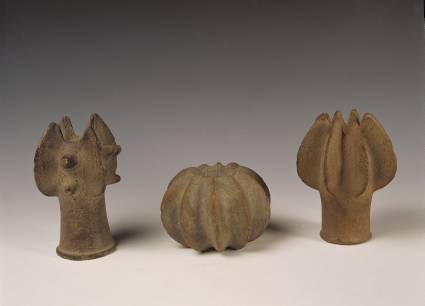
This is a weapon used by the Byzantine cavalry.
我们来说说具装骑兵的弱点,他们的冲撞伤害相比欧洲骑士和长矛骑兵要低一些。同时远防也较低,毕竟具装骑兵的锁子甲对于弩箭来说防御力不算好。
Moving on to weaknesses, Kataphractos do lower damage from collisions than European knights and lancers. The distance defense is also low, since Kataphractos’ mail armor is not a good defense against crossbows.
具装骑兵的另外一个特色就是能升级火力压制,也就是箭雨,这是一种联合突击的技术。弓骑手从骑兵的头顶上方抛射箭雨,在重骑兵的冲击之前扰乱敌人的队伍。这个技能可以看做是英雄连中火炮单位比如英国传教士自走炮的火力监听能力翻版,在一小段时间内用远程火力封锁一块区域。
Another feature of Kataphractos is the ability to upgrade fire suppression, arrow Shower, which is a combined assault tactic. Byzantine archers threw arrows from over the heads of their horsemen to disrupt enemy lines before the onslaught of heavy cavalry. This ability can be seen as the fire monitoring ability of artillery units in Hero Company such as the British Missionary Gun, blocking the target area with long-range fire for a short period of time.
PS: The creators of Empire 2 also wanted Byzantine cavalry to shoot arrows.
PS:帝国2的原设计师也想过让具装骑兵又能射箭又能近战。
Thank you, Sandy! ![]()
Great concept as always my friend! It is harder than most realize to create a civ concept for the Eastern Roman Empire (ERE) that actually works, as their timeframe is very different from most of the other civs in the era AOE4 covers. While most civilizations go from a very primitive state to their imperial Zenith, the ERE actually go backwards, from the height of their civilization around the IX and X centuries, into a slow decline and their final colapse in the XV century.
I’m ok with the timeframe you selected for your concept, the centuries after Justiniano go well with a “Dark Ages” first era, in which the Empire almost collapsed several times. However there two things that saved them and Europe from the arabs expantion in the VII and VIII centuries that you’re saving for the last, Greek Fire and their Navy. To be fair, you are yet yo post anything about Navy, however seeing the Fire Throwers concept left for “Imperial Age” has me thinking. I always thought the ERE should he a Defensive focused faction, with a really strong Mid Game, but weak Late if they let their enemies grow too strong.
I’m happy with the concept you have presented so far, just keep in mind this. Letting the ERE to build stone walls as a civ bonus and getting strong defensive unique units, including some boats capable of using greek fire Early Game would be a nice, historical accurate, addition too.
You’re thinking the same thing. I’ll get back to navy and defense later. I actually finished this a week ago, and I need to translate the text into English. So it’s going to be slower.
The advantage of Greek Fire is mainly due to the balance of the game was introduced late. It’s kind of scary to have a bunch of flamethrowers in feudal times. ![]()
Siege weapon
攻城器
Byzantium does not have artillery, but has more characteristic siege technology.
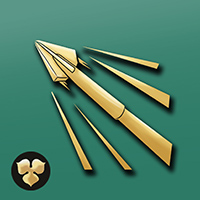
冲击箭头:弩炮发射的箭头可以穿过直线上的数个目标。
Impact ballista arrow,Springald can fire a bolt that shoots through multiple straight targets.
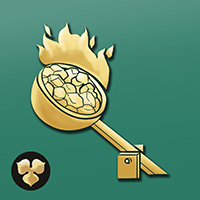
燃烧弹:投石车和配重投石机能投掷燃烧弹,立刻点燃建筑物。
Burning projectile,Counterweight Trebuchet and Mangonel can throw fireballs that directly ignite buildings.
